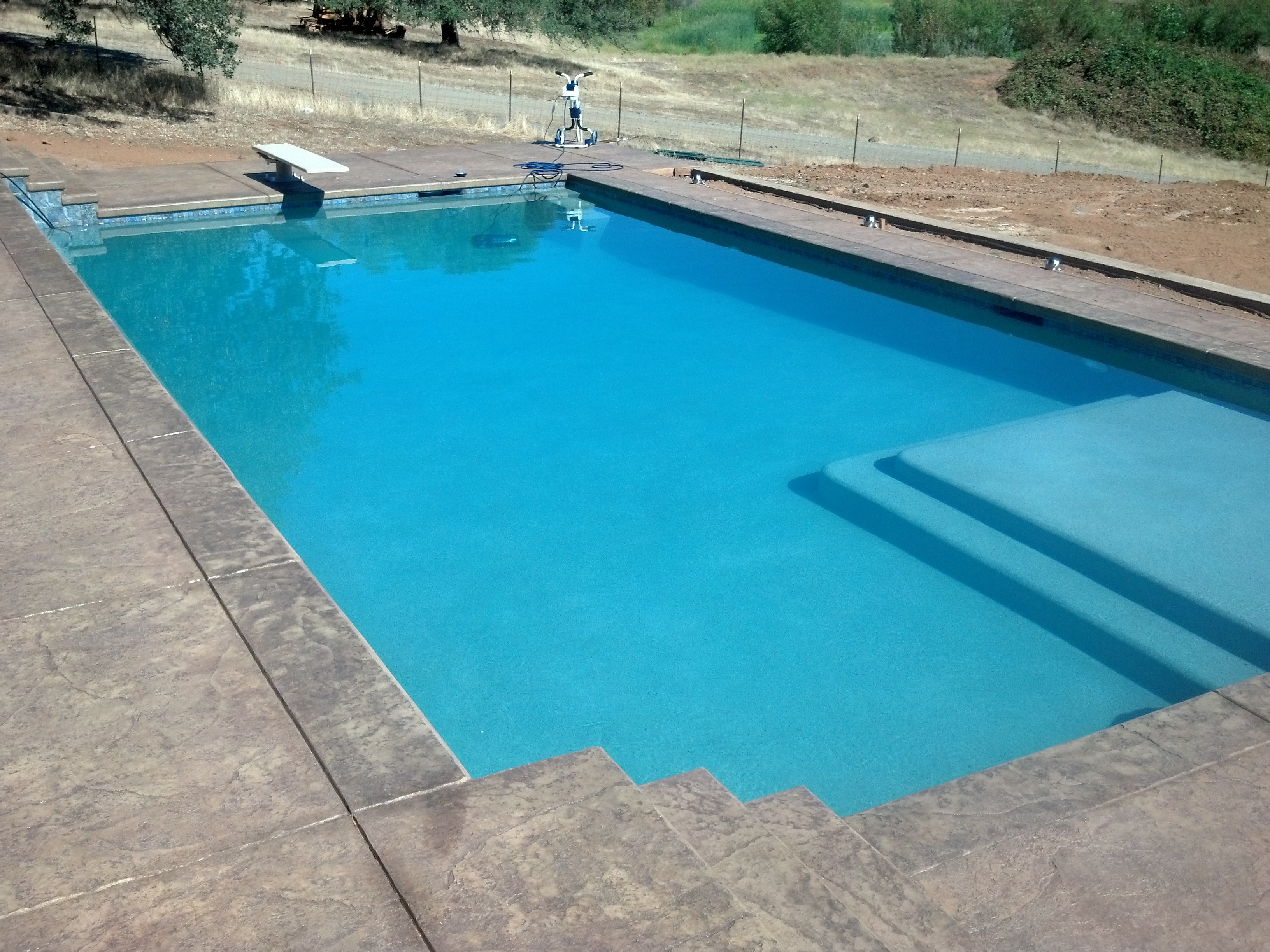1. Create a wish list.
You may have been dreaming of a swimming pool for years, and you may think you know exactly what you want. But it pays to read up on the latest technology and gather ideas. Once you’ve done a little homework, you’ll be ready to speak to Adam’s Pools about what it is you want out of a swimming pool. We’ll be able to help you crystallize how you plan to use the swimming pool and can suggest styles, materials, designs, and blueprints to make your dream a reality.
2. Create a look book.
It’s often difficult to put your ideas into words. Pool builders and designers appreciate when customers come to them with pictures from magazines, our swimming pool photo galleries, or even scenic photos taken on vacation. They give us a good sense of what you’re interested in and how to incorporate your style preferences into the swimming pool design. It also ensures that you and your builder are on the same page.
3. Research the three types of inground pools.
A swimming pool is an investment, just like a car or a home. You wouldn’t just buy any car on just any lot, would you? The same rules apply. There are many ways to build a swimming pool. Some are made of concrete, others are made of fiberglass, and still others are vinyl. And that’s just the first step. Coping, cleaning systems, filtering systems, artistic finishing touches. The list of variations goes on and on.
4. Find a credible pool builder.
Once you’ve made the decision to dive into swimming pool ownership, the best way to ensure a smooth building process is to choose a seasoned swimming pool construction professional. Check with friends, your local and regional pool builders associations, even the Better Business Bureau. Interview several candidates, and ask about their building philosophies. A good pool builder will offer examples of his work, provide references (be sure to check them), and be able to answer relevant questions. You’ll be working with this person for many months, so choose someone you feel comfortable with. We provide all of the above, so feel free to call us with any questions!
5. Decide what kind of pool shape you want.
Swimming pool design is critical to both the overall aesthetic you’re trying to achieve and what you can actually do in the swimming pool. Rectangular designs are perfect for people wanting a classic, timeless look. They’re also great for games and swimming laps. Kidney and free-form swimming pools can blend with the surrounding vegetation and appear more natural. They also lend themselves to waterfalls and grottos. Choosing the wrong shape may mean you have a swimming pool that doesn’t really suit your lifestyle as well as it could.
6. Consider the weather in your area.
Depending on where you live, the weather can dictate certain pool building decisions. People in colder climates should consider enclosures to prolong the pool season. Those living in wetter climates also enjoy the benefits of enclosures. In temperate climates—places where it never gets overly warm—pool heaters are useful. Windy areas, heavily treed areas, or places cold enough to close swimming pools for the season make swimming pool covers a good idea to stem evaporation, keep leaves and debris at bay, or protect the swimming pool when not in use. Many of these options are just plain good ideas, but your local weather can make them necessities.
7. Know how you want to use your pool.
Stop and think about why you’re installing a swimming pool. Is it for your kids? For entertaining? Is it an investment? Do you want it to make a dramatic architectural statement? Or is a relaxing retreat for you and your spouse? Answering these questions will help tell you what kind of swimming pool you want. A swimming pool for kids might include a slide and a wading area. It probably doesn’t need high-end glass tile finishing or a vanishing edge. But if you want something that is as visually appealing as it is enjoyable to use, you might consider a built-in water feature, more expensive coping, and a negative edge. A client with a clear sense of purpose is a builder’s best friend.
8. Establish a budget.
You probably already know what you’re willing to spend on a new swimming pool, but it’s important to speak with your pool builder to gather more information and get a sense of what your project will cost. Your pool builder will be able to listen to what you want and give you an estimate on what it will cost to make it happen. You may have to adjust your plans, or you may find you have the resources to add to your initial concept. Either way, it’s important that both you and your builder know what your budget is from the start.
9. Consider long-term costs.
Owning a swimming pool is actually quite affordable. Upkeep, especially if you take a few energy-saving steps (more on that below), can literally cost pennies a day. But it’s best to have an idea of what those costs are. Factor in how much water it will take to keep your swimming pool full, cleaning and water maintenance costs, and any accessories (pool covers, filters, toys, etc.) you’ll need to purchase.
10. Check your local building codes.
Yes, your pool builder can help you with this part immensely, but it’s a good idea to know the rules yourself. Some areas require perimeter fences of a certain height. Some require the fences to lock. Others require a fence around only the swimming pool itself. You’ll also want to inquire about building permits, building restrictions, noise policies, and property tax concerns.
11. Don’t forget about insurance.
When establishing a budget, don’t forget to think long term. Contact your insurance carrier and find out if owning a swimming pool affects your homeowner’s policy—no one likes to be surprised.
12. Don’t skimp on the features you really want.
Yes, we told you to stick to your budget (and that’s sound advice), but don’t settle if you can help it. Retrofitting a swimming pool is never as easy as the initial install. So, if you really want that slide or the cascading waterfall over the slab of granite, go for it. If it busts the budget, ask your pool builder where you might be able to save elsewhere. You never want the swimming pool that’s “almost perfect.”
13. Be energy efficient.
It’s easier than ever to save on a swimming pool’s energy costs. Enclosures, pool covers, and pump and lighting timers can all pay for themselves in energy savings in a short amount of time. In cool climates, it can sometimes pay to shut your swimming pool down for the winter, rather than heat it.
14. Be green and eco-friendly.
Some shy away from swimming pools for fear of their environmental impact, but the industry has worked hard in the last few years to make pool owner and steward of the environment not mutually exclusive terms. Today’s pool heaters can be heated almost entirely using solar energy. There are even swimming pools filtered using totally natural methods—an attached pond does all the work—and many chemical water treatments can now be replaced by less harsh natural alternatives. Swimming pool covers also reduce the amount of water lost (and then replaced) due to evaporation.
15. Don’t forget water features.
Elegant waterfalls, spouting sconces, bubbling fountains—people love water features almost as much as the swimming pools themselves. If you’re interested in adding a few jets to your swimming pool, though, it’s best to do it during the initial construction. Retrofitting can be tricky (and sometimes impossible, depending on your swimming pool and what you want done) without a major remodel. It also costs more than twice as much, typically, to install water features after the fact.
16. Plant with purpose.
This is especially important when thinking about your budget. You won’t want that swimming pool sitting in the yard by itself, so consider what you’d like to plant and where. Avoid planting messy trees (pecans, gums, sycamores) or trees with far-reaching, shallow root systems (some oaks, birches, cypress) near your swimming pool, for instance. Instead go with bushy perennials that don’t grow as tall and can be moved if necessary.
17. Keep safety in mind.
Beyond any required fencing your local codes require, consider what other safety measures you’ll want to have in place. Swimming pools can be equipped with alarms to alert you when someone or something enters the water. Child-proof locks on gates, and security alarms on windows to the backyard are also considerations.
18. Think about finishing touches.
Things like coping, decking, and borders can make a swimming pool stand out. The materials used for each vary—stone, concrete, ceramic and glass tile—and each has its own advantages and disadvantages. Discuss with you designer which options are right for you.
19. Put fun on the list.
As the swimming pool nears completion, it’s time to enjoy yourself by gathering all those extras that make pool ownership fun. Toys, games, floats, swimsuits, patio furniture, you name it. Accessorizing is half the fun.
20. Plan your first pool party!
Don’t forget to throw a big bash to celebrate your new swimming pool. Get the burgers on the grill, invite the kids’ friends (and a few of your own) over, and break in your swimming pool in style.


